Crypto Academy Week 4 Homework Post for [@yohan2on]
HOMEWORK TASK 4
INSTITUTION: STEEMIT CRYPTO ACADEMY
COURSE: Introduction to Decentralized Finance (DeFi) – A new Fintech Revolution (Part 1)
CRYPTO PROFESSOR: YOHAN2ON
HOMEWORK TASK: Briefly explain each of the following DeFi apps -
- Maker
- Compound
- Synthetix
- bZx
- Uniswap
This is my homework task 4 entry on the above-stated course lectured by the above-stated crypto professor.
In this homework task, based on my understanding of what was lectured by the above-mentioned crypto professor, I'll be talking about DeFi and also explaining some DeFi apps.
INTRODUCTION

Over the years, blockchain has seen lots of improvements, additions and innovations. One of these was, the introduction of programming to the blockchain. Programs could be written and stored on the blockchain, and could also be interacted with. This sparked up lots of innovations in the crypto space. It led to the rise of smart contracts, dApps, DeFi, etc.
These innovations have led the evolution of the crypto space which is now poised to decentralize almost everything or sector that can be decentralized on our terrestrial planet.
One sector that has been invaded by the deluge of decentralization is the finance sector. Evolutions in crypto have brought about a very important innovation called DeFi. This is fast spreading across so many areas of the financial sector, gaining more traction as it spreads.
WHAT IS DEFI

DeFi is an abbreviation of the two words - decentralized and finance. Decentralized finance is simply a form of finance without intermediaries and a central authority. The elimination of these intermediaries and central authorities is made possible by the use of smart contracts on a blockchain.
The range of financial instruments offered by DeFi applications include, lending, trading, interest on savings, borrowing, etc. These, as you would have noticed, are traditional financial instruments but they're offered without the traditional intermediaries like banks, centralized exchanges, brokerages, etc.
DeFi eliminates intermediaries in its transactions. These transactions are instead carried out directly between the people involved, with the help of smart contracts. Smart contracts are programs written and run on the blockchain, that performs transactions automatically when certain pre-stated conditions are met. These smart contracts act like intermediaries in that they mediate between the participants.
DeFi transactions are usually carried out through the use of dApps (decentralized applications). These applications operate without central authorities or intermediaries but on smart contracts. A few of them are discussed in this homework task
EXAMPLES OF DAPPS

Examples of dApps include - Maker, compound, synthetix, bZx, uniswap, etc.
MAKER
Maker is a decentralized autonomous organization (DAO). Hence, it is often referred to as MakerDAO. Also the first DAO, maker aims to arrest the issues inherent in traditional finance with transparency issues being the major culprit. To achieve this, maker employs ingenious technologies involving blockchain, smart contracts and a stablecoin.
Maker has a decentralized lending platform in its Maker ecosystem which is based on the ethereum blockchain and allows its users to borrow and lend assets using smart contracts and its stablecoin - DAI.
Lending and borrowing is done through Maker's CDP (Collaterized Debt Position) portal otherwise called - Maker CDP Portal, which is a dApp.
HOW DOES MAKER WORK?
Maker conducts borrowing and lending through crypto. To nullify the effect of crypto volatility, maker uses its stablecoin - DAI, for borrowing and lending. Maker also uses MKR - another of maker's coins, and ETH - ether. These three coins are used to ensure stability of the platform.
To borrow, a user locks up ETH and when this is done, DAI is produced and lended to them. At the expiration of the loan, the user repays in DAI. The ETH locked up is used as collateral.
If during the loan duration, the value of ETH drops below that of the initial DAI equivalent borrowed, at a point, if the price continues downward the loan will be liquidated ie the ETH locked will be sold out to repay the loan as well as penalty and fees.
If there are so many liquidations going on, another of maker's coins - MKR, will be created and sold by maker to raise money to repay the debt. The penalty which will be paid by the borrower will then be used to buy back the MKR created and then it will be destroyed.
HOW TO USE MAKER?
To access maker, you'll need a web 3.0 wallet like coinbase wallet or metamask. I use both but coinbase is my preferred wallet.
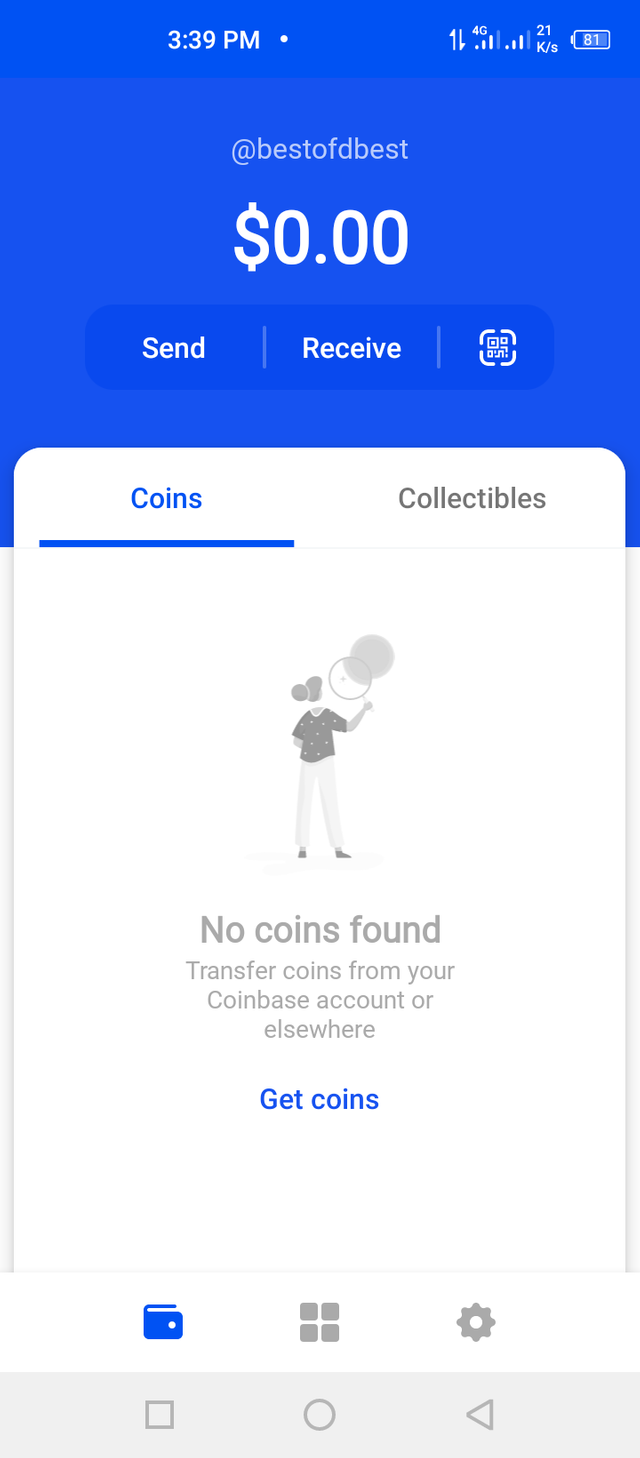
On coinbase app, click on the middle icon at the bottom of the screen. You'll be directed to the wallet's dApps collection from where you are to choose maker CDP portal.
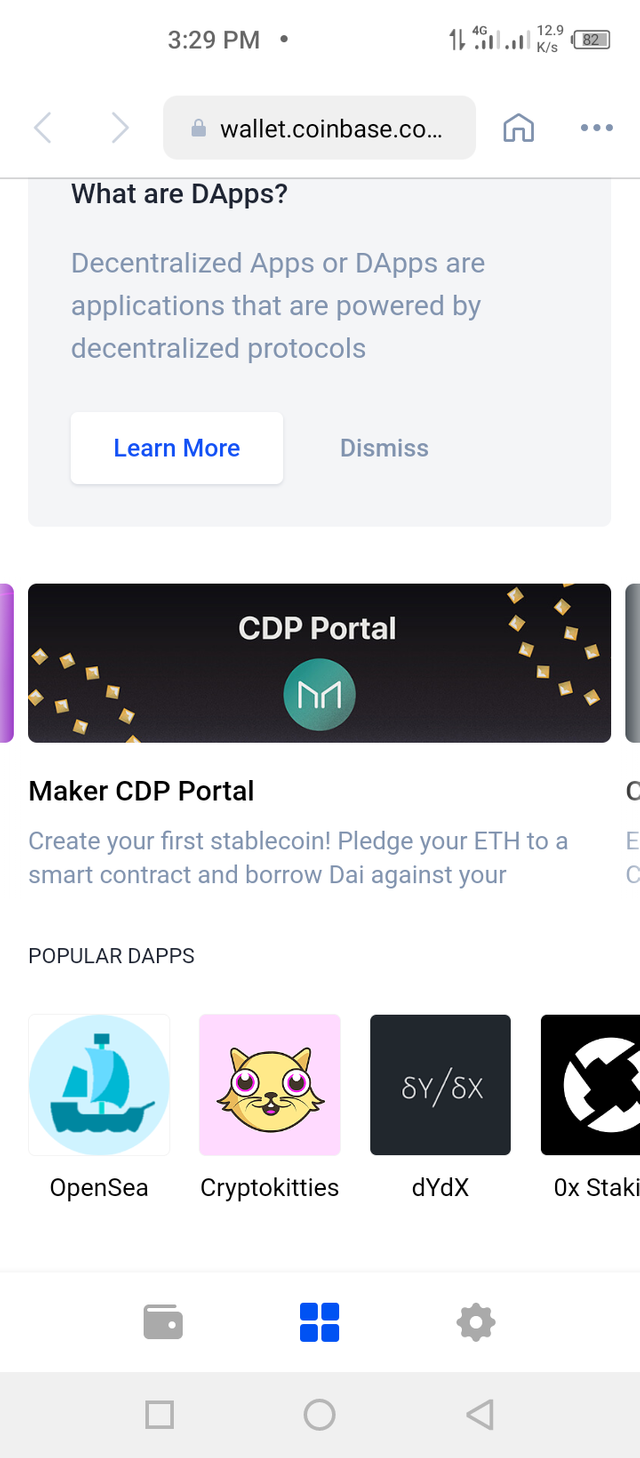
You'll be asked to connect a wallet, simply choose coinbase wallet. Then you're set to get started.
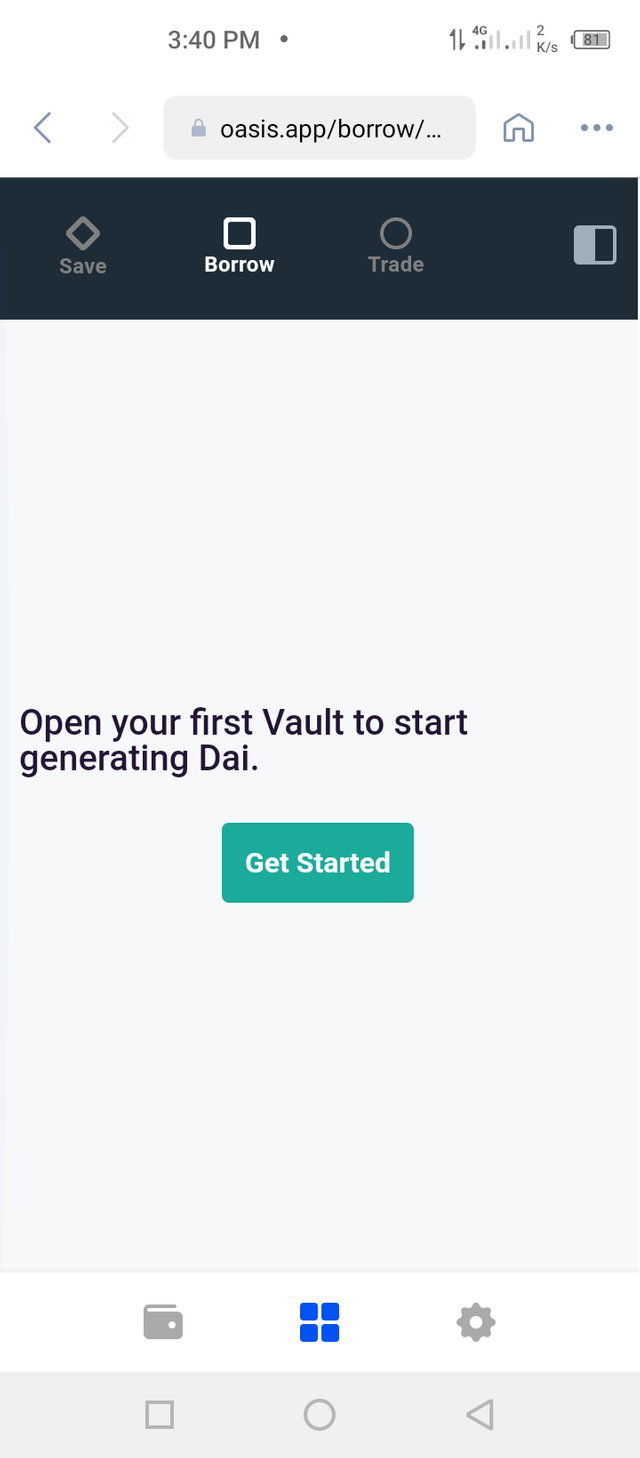
You can then choose between trading, saving and borrowing.
COMPOUND
Compound is another ethereum-based DeFi project just like Maker. It also support lending and borrowing and also employs smart contracts only that it does not involve a stablecoin. Compound however, involves the use of algorithms to adjust interest rates though this can also be done by holders of its native token - COMP.
Borrowers can access crypto assets to borrow an pay an interest while lenders can lend their crypto assets and earn an interest. Compound can also be accessed through a web 3.0 wallet like coinbase wallet or metamask. Here again, I prefer metamask.
HOW DOES COMPOUND WORK?
Lending and borrowing take place on compound. Lenders unlock assets in their connected wallets and supply them as liquidity to Compound from the wallets. They immediately start earning interests from them once the supply is completed.
Borrowers first have to unlock their assets in their connected wallets and then deposit them as collateral. This gives the borrower a borrowing capacity that determines the limit they can borrow. Usually, this limit is 80%, this is because like many other defi lending and borrowing projects, Compound employs overcollaterization to prevent liquidation.
HOW TO USE COMPOUND
Let me briefly narrate how to access Compound using the coinbase web 3.0 wallet. Coinbase wallet is available on google playstore and on the apple app store - just for the records.
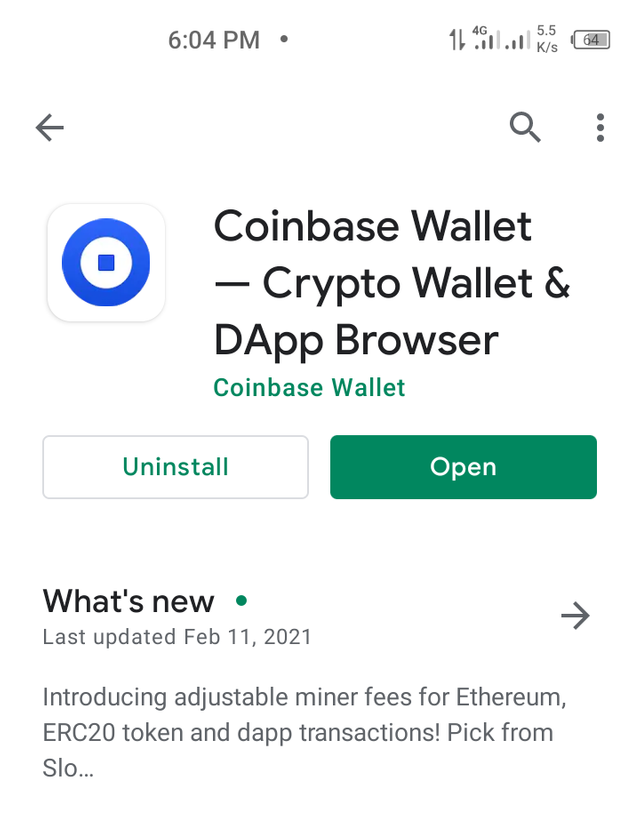
From your coinbase wallet, click the center icon at the base of your screen.

This will direct you to the wallet's dApp collection. From here, swipe the dApps list vertically till you find Compound.
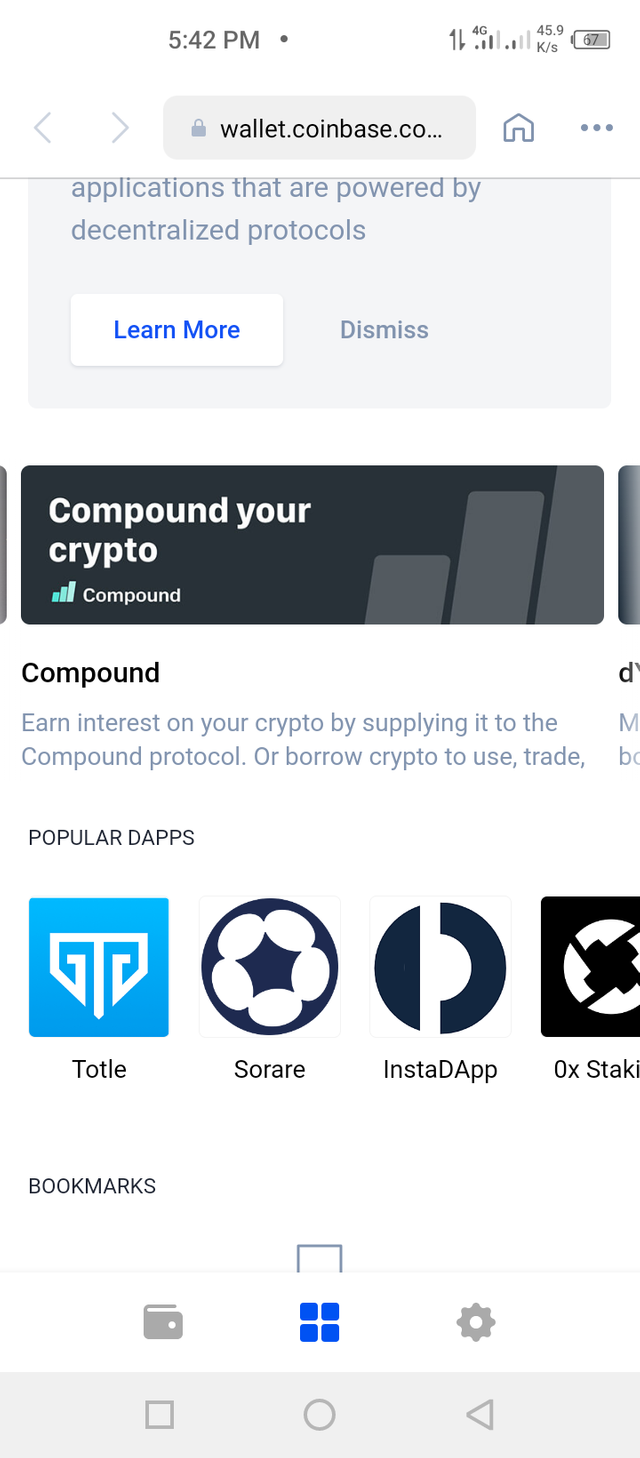
Select it to get started. You'll have to connect your web 3.0 wallet if you haven't done so already. You'll also need to deposit funds to Compound if you want to borrow.
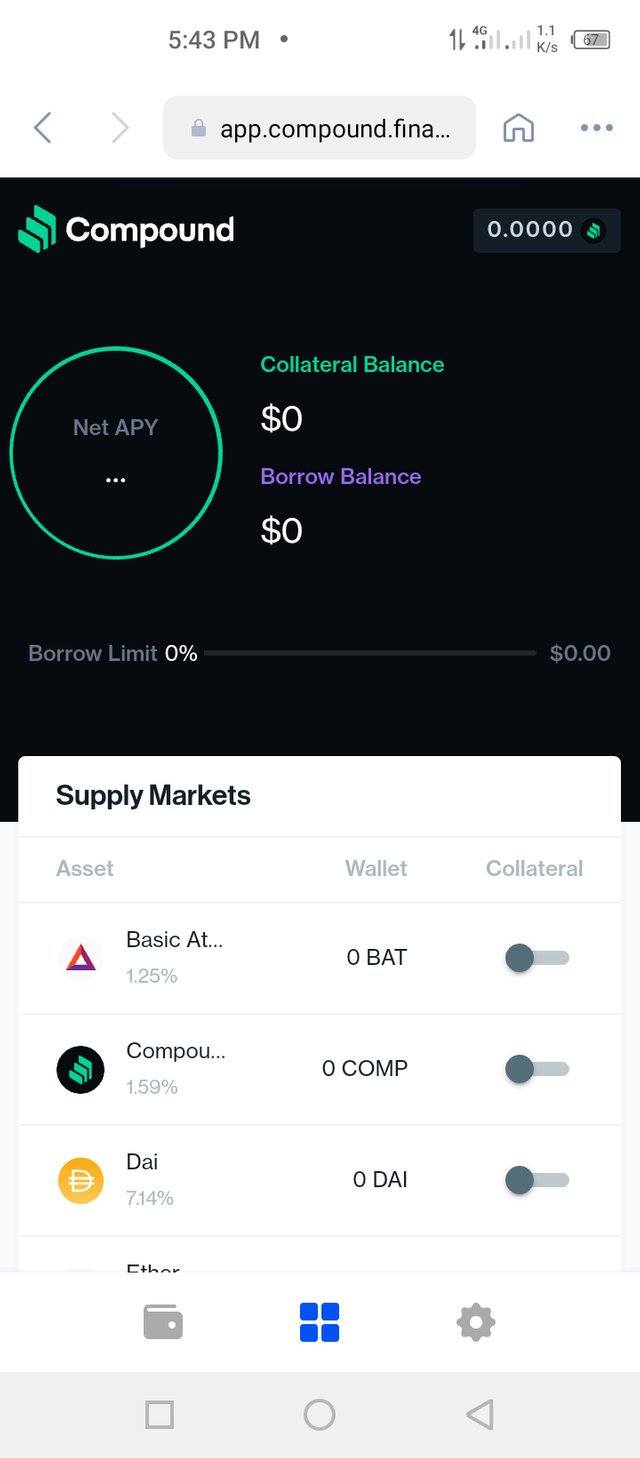
To borrow, scroll down to the borrow markets and click on the asset you'd like to borrow. The interest rates are also indicated.
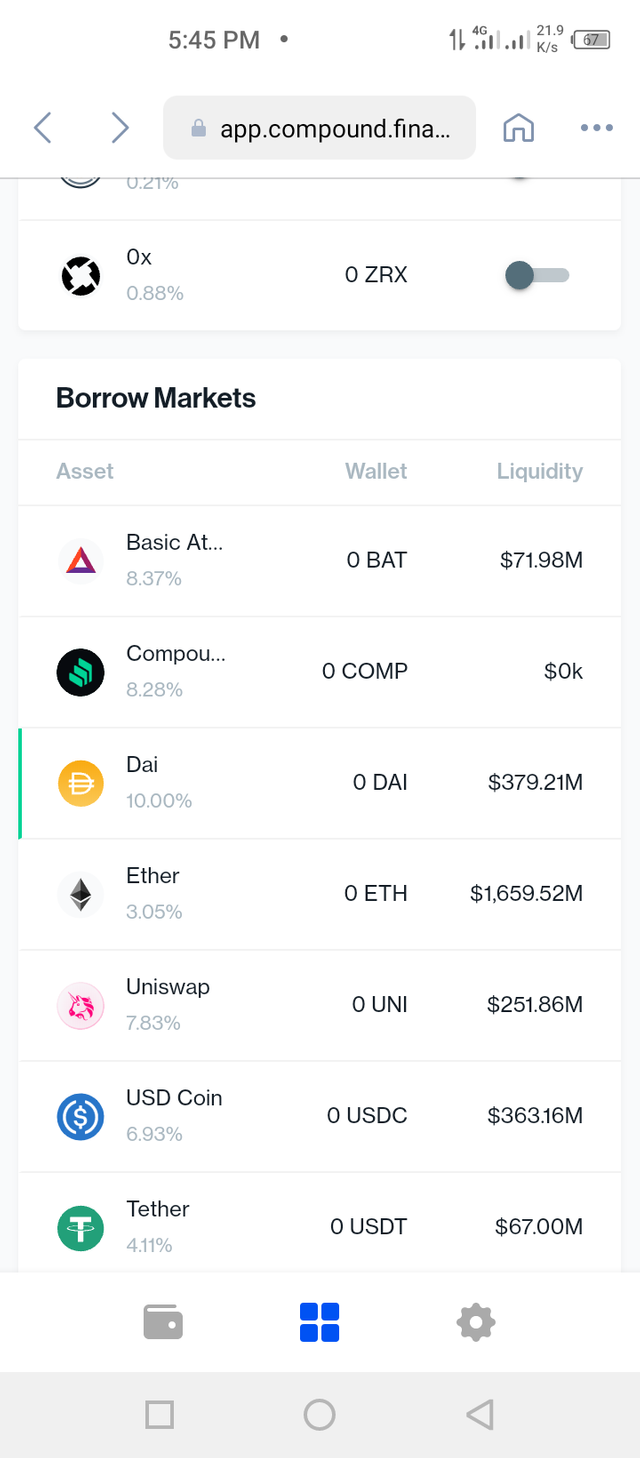
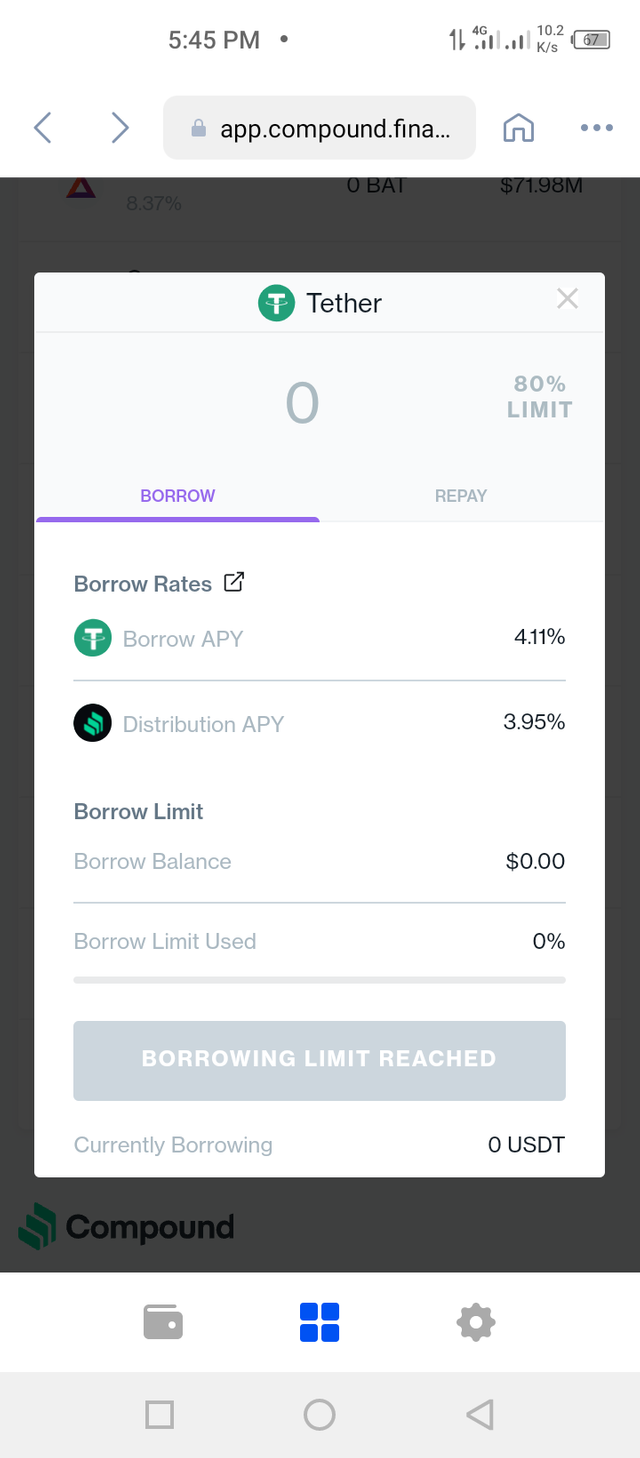
Here, I can't borrow because I don't have funds in my coinbase wallet. But when I need to borrow, I'll simply fund my coinbase wallet and follow these steps. These assets borrowed can be used to exchange on another platform.
SYNTHETIX
Synthetix is the third ethereum-based protocol on our list. It is, however, a protocol that issues synthetic assets. Synthetic assets are assets that mimic an original asset. Through synthetic assets, we can trade the original asset and benefit (or otherwise) from its price movements without actually having the asset. These synthetic assets issued by Synthetix, can then be traded on kwenta or the Decentralized Exchange of the Synthetix protocol.
Synthetix, like other ethereum-based DeFi projects, involves the locking up of assets. This has to be done in order for synthetic assets to be issued.
HOW DOES SYNTHETIX WORK?
Synthetix is so much like MakerDAO in the sense that it requires users to lock up assets for it's issued asset (in this case any synthetic asset) to be created. Since Synthetix can issue both crypto and real-world assets, it uses oracles to track the real-time prices of any asset that is not based on ethereum chain. It is also governed by DAOs.
HOW TO USE SYNTHETIX
Synthetix native asset is locked up for synthetic assets to be issued. These synthetic assets can be traded on a number of DeFi trading platforms like Kwenta. Synthetic assets can also be traded for ETH on kwenta, which implies that there are two ways one can acquire Synthetix's synthetic assets, viz -
- Exchanging ETH for synthetic assets on kwenta
- Staking or locking up SNX, Synthetix's native token on Mintr - Synthetix dApp.
bZx
Maybe, just maybe our list is populated by ethereum-based platforms and protocols. So if you've had enough of ethereum-based DeFi, get bored with another ethereum-based lending platform - bZx.
bZx is an ethereum-based decentralized lending and margin trading platform that uses tokens and smart contracts to run its lending transactions. It's main focus seems to be lending to traders and margin trading. The bZx protocol uses three tokens for its lending and margin trading processes, which are - iTokens, pTokens and BZRX.
Lenders who supply liquidity get the iTokens while borrowers who accept liquidity are issued pTokens. BZRX is merely for payment of fees for now.
HOW DOES bZx WORK?
On bZx, lenders provide the funds to be borrowed and are issued iTokens. With these tokens, the lender can claim the funds they provided as well as the interest that has been accumulated.
Borrowers on the other hand borrow money for margin trading and are issued pTokens depending on their positions. The value of the token depends on the value of the assets involved in the margin trade.
HOW TO USE bZx?
Just like many other ethereum-based platforms, to access bZx, you simply use a web 3.0 wallet like metamask. To access fulcrum for lending or margin trading, follow these simple steps -
Open bzx.network on your web browser
Scroll down and select fulcrum
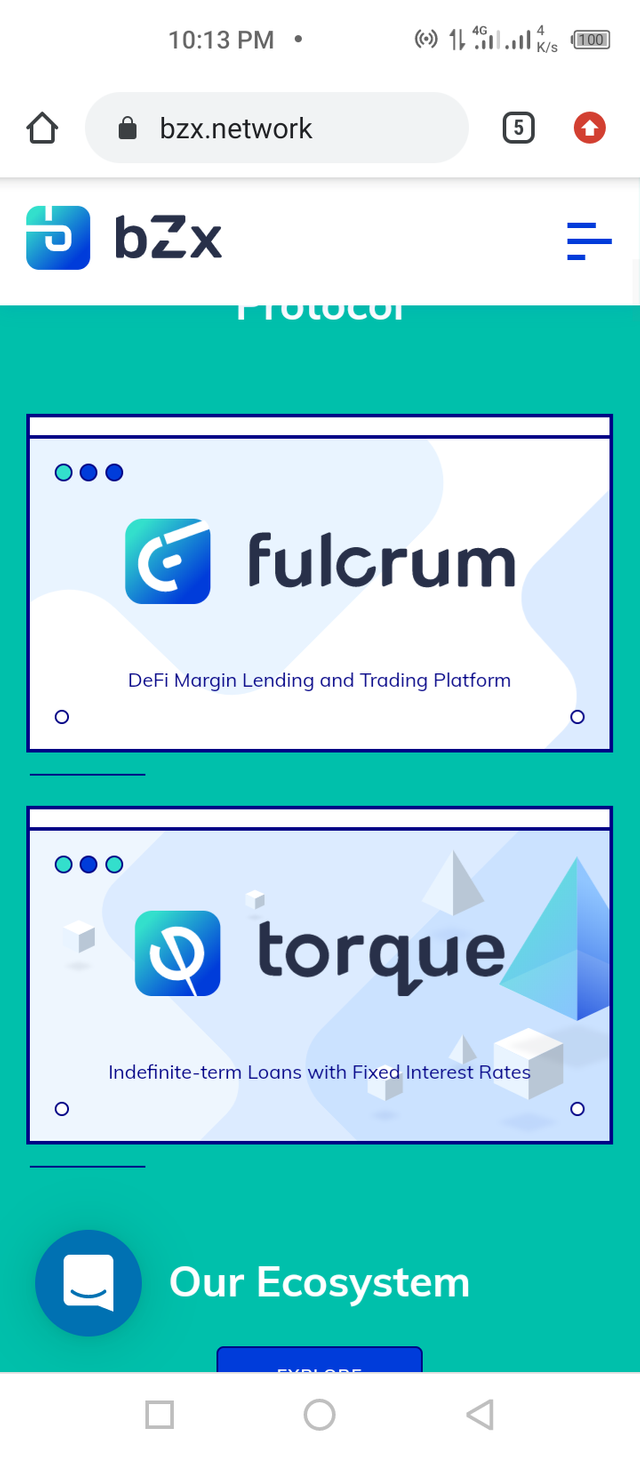
Click on Trade or Lend, whichever one you want
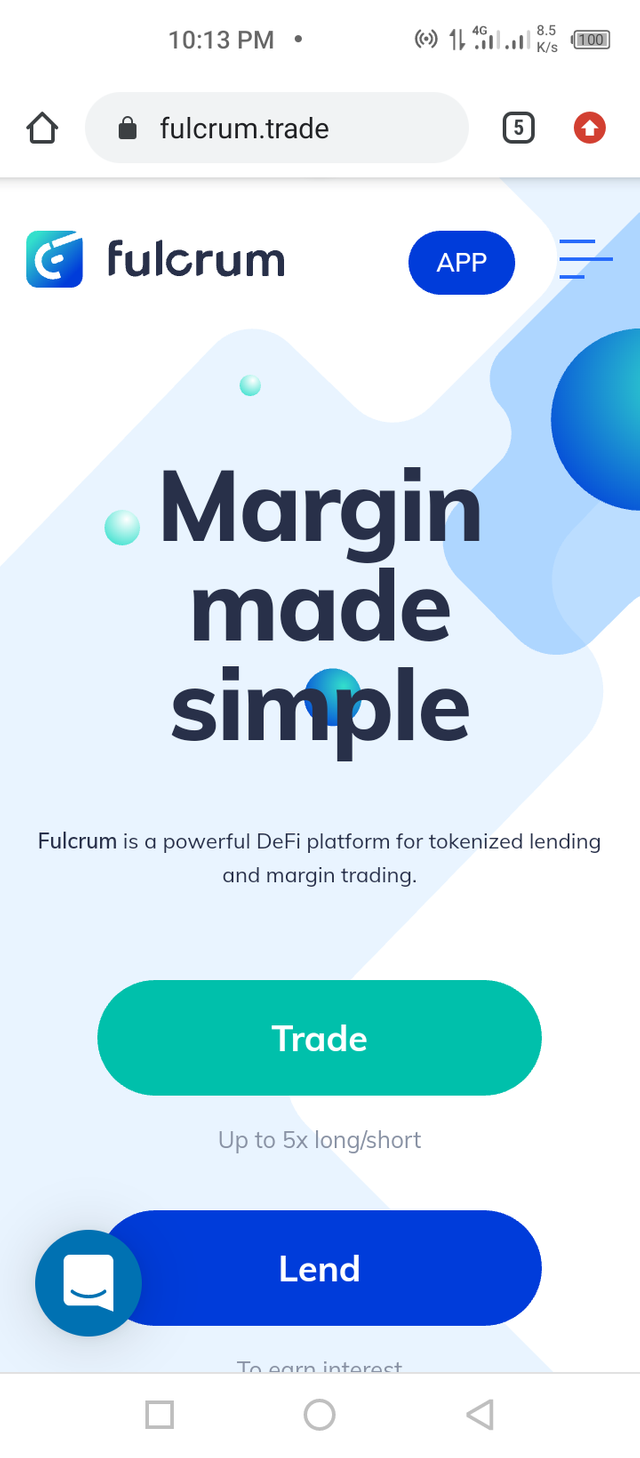
- Select a wallet to connect to (I used metamask)
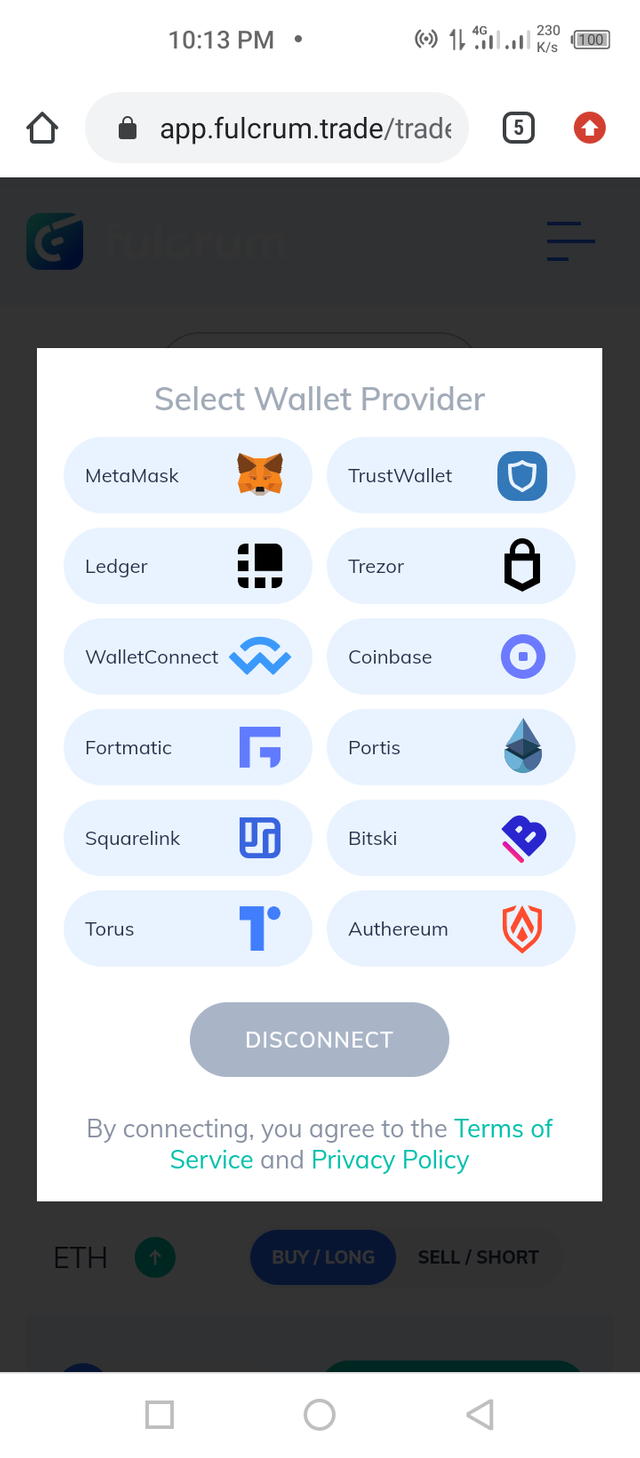
UNISWAP
Officially, all our DeFi examples are based on ethereum, just for the records though. So, finally, Uniswap.
Uniswap is an ethereum-based decentralized exchange that allows users to swap tokens from their wallets without needing an order book. It's special to me because it's a DEX - Decentralized EXchange. If you know about centralized exchanges like binance, coinbase, kraken, huobi, etc, chance is you must have heard of order book? That is how trade is facilitated in centralized exchange.
In UNISWAP, facilitation of trade is done using ALP - Automated Liquidity Protocol. Being a decentralized exchange, users are fully in control of their assets, compared to centralized exchanges. There is also the absence of a single point of failure.
HOW DOES UNISWAP WORK?
Uniswap unlike centralized exchanges don't use order book, but instead, they use an automated liquidity protocol. In this automated liquidity protocol, Uniswap encourages its users to supply their assets as liqudity on the exchange. Users are encouraged to do this through the percentage payed to them as contributors to the pool.
This liquidity provided is where the assets used to fulfill trade orders are gotten from. Listing new coins on uniswap is easier than it should. The coin can be listed as long as there is a pool for it. A pool is simply and trade pair. Eg. An ETH/USDT pair is an ether tether pool. If a lender supplies 10% of the liquidity in a particular pool, they get 10% of the fees.
Uniswap can be accessed from the dApps collection on coinbase wallet (from where we accessed Maker CDP Portal and Compound).
CONCLUSION

Defi is fast gain traction as it spreads through different areas of finance, with all these dApps and many more still to come, it's only a matter of time before DeFi takes over finance entirely. DeFi also highlights the importance of web 3.0 wallets which can be used to access most DeFi protocols and platforms.
Cc:
@steemcurator01
@steemcurator02
@steemcurator04
@yohan2on
Special mention:
To the attention of some notable steem promoters who keep inspiring me on my crypto journey which began here on steemit.
@stephenkendal
@trafalgar
@crypto.piotr
@steemchiller
@justyy

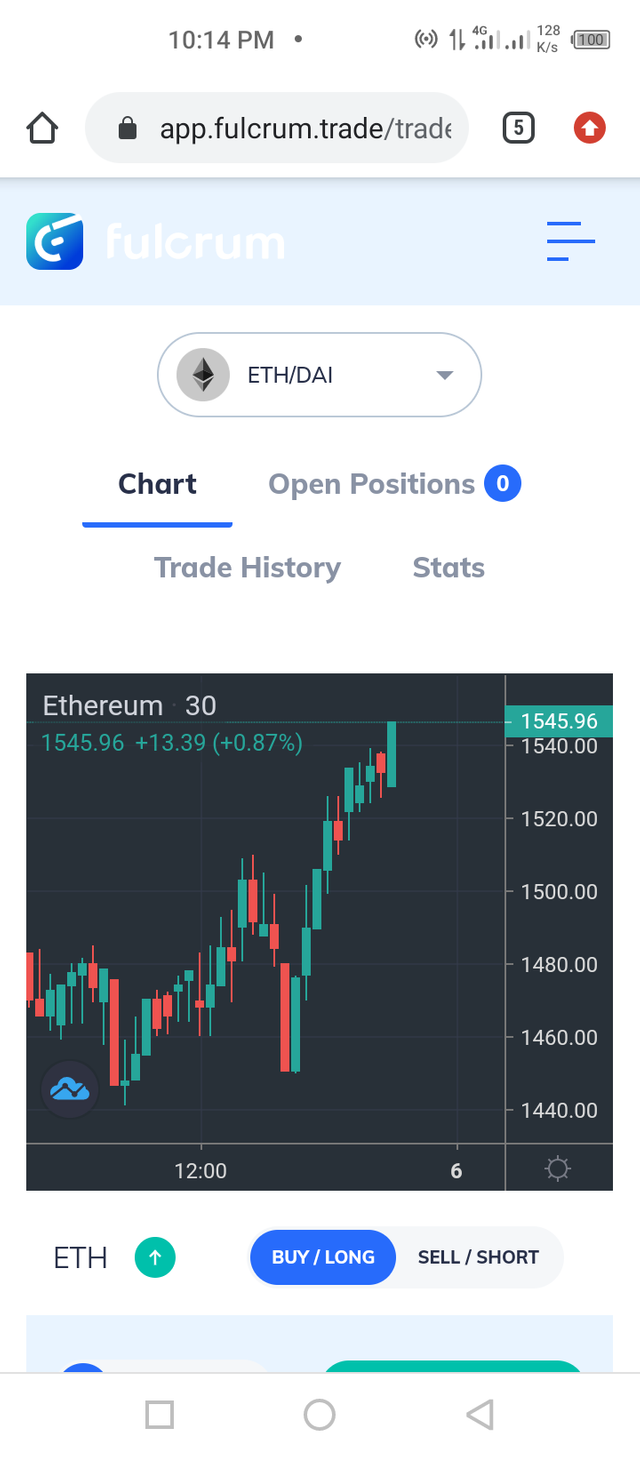
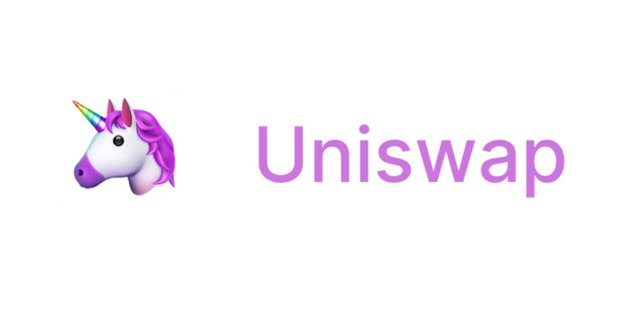

Hi @jehoshua-shey
Thanks for attending the 4th-week Crypto Course and for your great effort in doing the given homework task.
Feedback
This is excellent work. I must admit that I enjoyed reading every text of it. It's well researched and fully endowed with all the necessary information for someone who really wants that first time exposure to the highlighted DeFi protocols. I am impressed! keep working hard.
Homework task completed
10
Thank you so much for the feedback Prof.